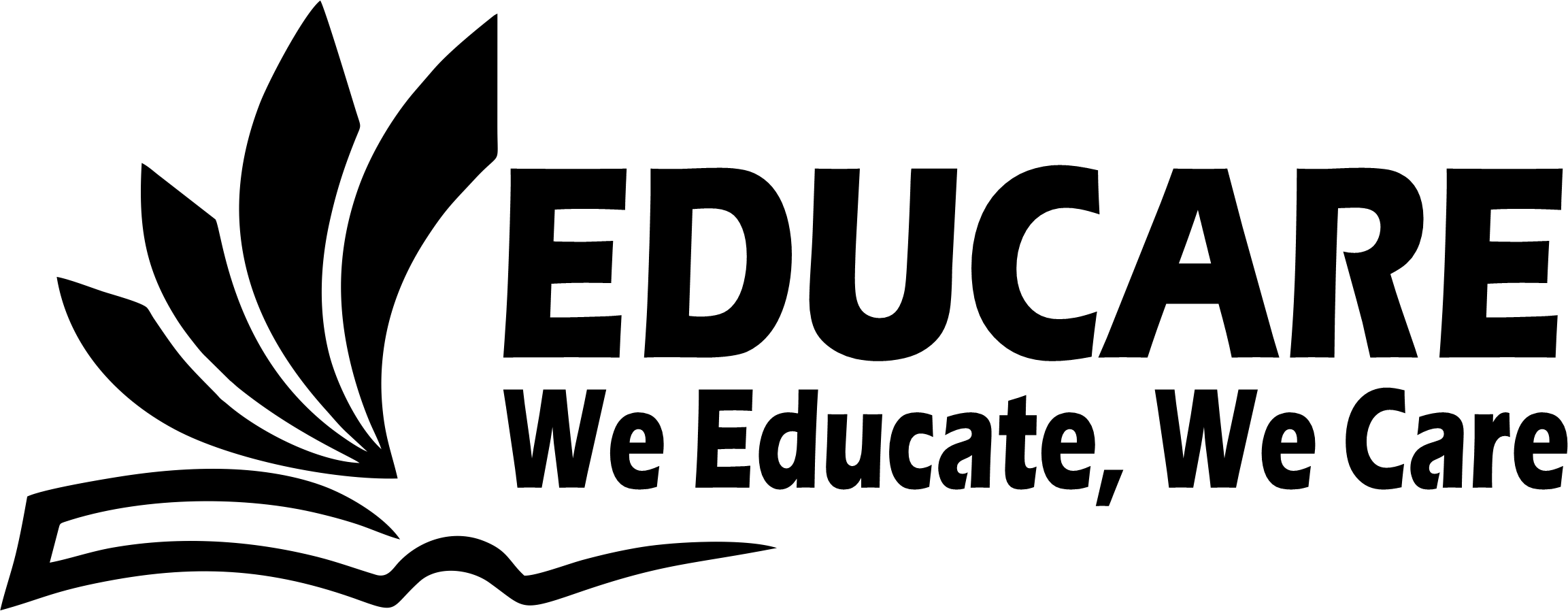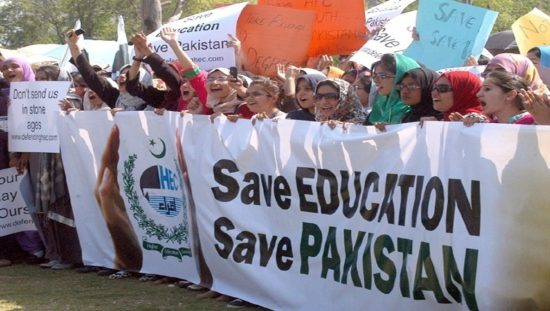Since independence in 1947, a variety of documents were developed on National Education Policies as guidelines on access, quality and governance in education sector of Pakistan;
- National Education Conference (1947)
- National Education Commission Report (1959)
- The Education Policy (1972)
- National Education Policy (1979)
- National Education Policy (1992)
- National Education Policy (1998-2010)
- National Education Policy (2009)
- Draft National Education Policy (2017)
Salient Features of the Education Policy (1979)
The primary objective of this policy was to “Islamize” education in Pakistan, and to develop a curriculum more suited to national aspirations and a minimum level of literacy was to be ensured. The elitist, two-tiered system of education was to be eradicated by directing government sponsored English medium schools to adopt Urdu as a medium of education. Thus, the unfair advantage the students of English medium schools had in the job market to be eliminated.
Another significant decision in the policy was the recognition of Madrassa, or Mosque school, as an educational institution per se.
Salient Features of the Education Policy (1992)
The Education Policy 1992 was focused on the following;
- Achieving universal primary education, eliminating drop-out rates, and fulfilling the basic learning needs by the year 2002.
- Encouraging involvement of the private sector for participation in the education system.
- Stressing women’s education.
- Raising the quality of an extensive in-service teachers’ training program.
- Diversification of vocational streams along with expansion of graduate and postgraduate level courses.
- Reforming of examination system.
- Introducing computer education at school level.
- Encouraging community participation in educational affairs.
Salient Features of the National Education Policy (1998)
The main features of the Education Policy (1998-2010) are as under;
- Every child of six to twelve year age group will be in a school within five years.
- Katchi class at primary level shall be introduced as part of the effort to improve the achievement of pupils.
- Access to elementary education shall be increased, through effective aid optimum utilization of existing facilities and services, as well as provision of new facilities and services.
- Improving the quality, access and efficiency of elementary education.
- Strengthening, governance, management/planning, supervision, monitoring & evaluation.
- Ensuring financial sustainability of elementary education and also to build institutional capacity.
Salient Features of the National Education Policy (2009)
The policy document identifies policy actions in pursuit of two overarching objectives:
- Widening access to education; and
- Improving quality
It also speaks about the two important gaps:
- Commitment and
- Implementation.
Key Policy Actions identified are as follows:
- Provinces and Area Governments shall affirm the goal of achieving universal and free primary education by 2015 and up to class 10 by 2025.
- Provincial and Area Governments shall develop plans for achieving these targets, including intermediate enrolment targets and estimates of the required financial, technical, human and organizational resources.
- The plans shall also promote equity in education with the aim of eliminating social exclusion and promoting national cohesion. Greater opportunities shall be provided to marginalized groups of society, particularly girls.
- To achieve the commitments of Government of Pakistan towards Education for All (EFA) and the MDGs, inclusive and child-friendly education shall be promoted.
- Special measures shall be adopted to ensure inclusion of special persons in mainstream education as well as in literacy and Technical and Vocational Education (TVE) programs.
- Governments shall improve provision of quality educational at all levels.
- National Standards for educational inputs, processes and outputs shall be determined. A National Authority for Standards of Education shall be established. The standards shall not debar a provincial and area government/organization from having its own standards higher than the minimum prescribed standards.
- Provincial Governments and district authorities shall establish monitoring and inspection systems to ensure quality education and service delivery in all institutions.
- Steps shall be taken to make provision of education relevant to the employability in market and for promoting innovation in the economy.
- Universities and research institutes shall place greater emphasis on mobilizing research for promoting innovation in the economy. The National Education Policy (2009) NPA to Accelerate Education-Related MDGs, National Plan of Action Pakistan (2013-16).
- Educational inputs need to be designed with comprehension of the challenges and opportunities related to globalization. Strategies shall be developed to optimize opportunities and minimize the potential negative impacts.
Salient Features of Draft National Education Policy, 2017
Following the salient features of the draft National Education Policy;
- Provide free and compulsory education up to Matric in compliance with the provisions of Article 25 (A) of the Constitution.
- Meeting the learning needs of the child which include learning tools (literacy, numeracy, problem solving and oral expression) and learning contents (knowledge, skills, value and attitude).
- Honor national and international commitments in education and literacy.
- Promote culture of research and innovation.
- Increase investment in education to 4% of GDP.
- Expand, strengthen and promote universal, comprehensive Early Childhood Education with an objective to ensure holistic development of child to prepare for formal schooling.
- Achieve universal quality primary education covering all the three dimensions/ aspects of universalization i.e. universal access/enrolment; universal retention; and universal achievement by 2020.
- Expand and strengthen the facilities and services for middle and secondary level education by upgrading more primary schools to middle and secondary level.
- Expand and extend the existing non-formal basic education program to middle level (VI-VIII).
- Achieve the target of literate Pakistan through launching the country wide campaign of literacy for all and through all.
- Re-introduce the quality technical and vocational education stream in selected schools at secondary and higher secondary school level to comply with national TEVTA standards.
- Establish trade schools at sub-district and district level.
- Encourage, facilitate quality private sector education.
- Achieve gender parity, gender equality and empower women and girls within shortest possible time.
- Improve the quality of education by introducing reforms of new initiatives in curriculum formulation, textbook and instructional materials development, teacher training, examination and assessment and monitoring and supervision.
- Recruit competent, capable and committed scholar-teachers purely on merit basis at all level of education.
- Develop and implement National Curriculum Framework and National Standards for each subject from Grade 1-12.
- Institutionalize new curriculum formulation, textbook development and review process in the light of 18th Amendment in consultation with National Curriculum Council.
- Promote regulated and monitored Public-Private Partnership for educational development.
- Improve coordination at local, district, provincial, national and international levels in education and literacy especially to achieve national and international commitments such as SDGs.
- Increase the investment in education by increasing the allocation, simplifying the procedures of releases and expenditure and improving the absorptive capacity of the system.
- Professional finance staff to be hired at the district levels to monitor the effective, timely utilization of funds according to the plans for increasing access upgrading the facilities and hiring of teachers on merit.
- Support to Deeni Madaris to utilize their services for promotion of adult literacy and non-formal basic education.
- Suggest effective mechanisms for implementation of education policy provisions. Educational administrators at Federal and Provincial levels to be held accountable for failure in timely implementation of policies and plans.
Focus of All the Policies
The main focus of all these policies was that the government must take steps to allocate enough resources to make sure that Education in the country is;
- Available: There must be adequate materials, classrooms, schools, trained teachers to ensure that quality education is available to every child.
- Accessible: Schools must be within reach and fit for purpose. They must be affordable for all children. There must be no discrimination for gender, race, religion or any other reason.
- Acceptable: Education must be of a high quality and include relevant information that is appropriate. Children with disabilities have the right to the same quality of education.
- Adaptable: Schools and school systems must be suitable for the communities they serve.
References
Shahbaz, S. T. (2018). Report of the Committee on Education Sector Reforms in Pakistan. Islamabad: Federal Ombudsman Pakistan.
OTHER RELATED POSTS



